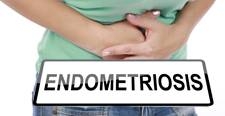5 Things You Need to Know About Endometriosis
Medically Reviewed by C. Dale Lusk, MD
Ideally, tissue and blood vessels grow to line a woman’s uterus, enabling her to become pregnant. Once a month, if she’s not pregnant, the uterus sheds the lining. That’s her period.
What is Endometriosis?
Unfortunately, our bodies don’t always do what they are supposed to. In the case of endometriosis, when the body rebels, tissue starts to grow outside the uterus. It can grow on the lining of the pelvic cavity, on the ovaries and fallopian tubes. It can also be found in the vagina, bowel and bladder, among other places in the pelvic region. This growth is endometriosis (ENDO-meet-tree-oh-sis), and here are 5 things you should know.
- Women in their 30’s and 40’s are most likely to have it. However, any woman having menstrual periods – even teens – can have endometriosis. “Those most likely to suffer from the problem are women who’ve never had children, have menstrual periods longer than 7 days or menstrual cycles shorter than 27 days,” says Gynecologist Dr. Dale Lusk of Advanced Women’s Care. “We don’t know what causes the growths to occur but there seems to be a family connection from mothers, sisters or aunts. Women with faulty immune systems (thyroid disease, chronic fatigue syndrome or fibromyalgia) also seem more likely to have the disease.”
- Pelvic Pain is the most common symptom. Discomfort – sometimes severe – can be felt during sex, during a woman’s period or when she’s ovulating.
- Infertility, or problems getting pregnant, can result. For more information on this topic, see the article on Endometriosis’ Effect on Pregnancy & Fertility.
- A minor procedure is the only sure way to diagnose it. A pelvic exam by your doctor might find scars. However, common misdiagnoses include Pelvic Inflammatory Disease or Irritable Bowel Syndrome. A more exact diagnosis might require an ultrasound (either externally or through your vagina) or a laparoscopy (lap-ar-OS-ko-pee). Using general anesthesia, the doctor will insert a thin tube through a tiny cut in the abdomen. Looking through the tube, the doctor can look for the growths and, if needed, take a small sample (biopsy) for testing.
- There is no cure, but it can be treated. Treatments fall into 3 categories.
- Pain Medication. Simple over-the-counter drugs, such as ibuprofen, can help. If these do not offer relief, your doctor may prescribe stronger medication.
- Hormone Treatments are best for women who 1) don’t want to become pregnant and 2) have small growths but little pain.
- Birth Control Pills can help limit the growth of tissue outside the uterus. If a woman wants to get pregnant, she can stop taking the pills – but – symptoms may reappear.
- Other hormones can be used to reduce endometriosis by cutting back estrogen production or using low levels of male hormone. Side effects can range from menopause type symptoms (hot flashes and dryness) to oily skin, weight gain, facial hair growth and depression.
- Surgery is usually recommended when there is a lot of pain, numerous growths or issues related to fertility.
- Hysterectomy involves removing the uterus, and sometimes the ovaries. This should be a last resort because a woman will not be able to get pregnant after a hysterectomy.
- Laparoscopy, described earlier, can also be used to remove the growths as well as any scars (adhesions) the growths may have caused. However, the hysterectomy offers you the best chance that growths of this type will not appear again.
Find a Gynecologist near you.
Sources include: McLeod Health, US Department of Health & Human Services (Office of Women’s Health), National Institutes of Health, Endometriosis Foundation of America, American Society of Reproductive Medicine, endometriosis.org
-
McLEOD REGIONAL MEDICAL CENTER FLORENCE
843-777-2000 -
McLEOD DARLINGTON
843-777-1100 -
McLEOD DILLON
843-774-4111 -
McLEOD LORIS
843-716-7000 -
McLEOD SEACOAST
843-390-8100 -
McLEOD CHERAW
843-537-7881 -
McLEOD CLARENDON
803-433-3000



-
McLEOD REGIONAL MEDICAL CENTER FLORENCE
843-777-2000 -
McLEOD DARLINGTON
843-777-1100 -
McLEOD DILLON
843-774-4111 -
McLEOD LORIS
843-716-7000 -
McLEOD SEACOAST
843-390-8100 -
McLEOD CHERAW
843-537-7881 -
McLEOD CLARENDON
803-433-3000
 Find a Doctor
Find a Doctor  Locations
Locations  Services
Services 